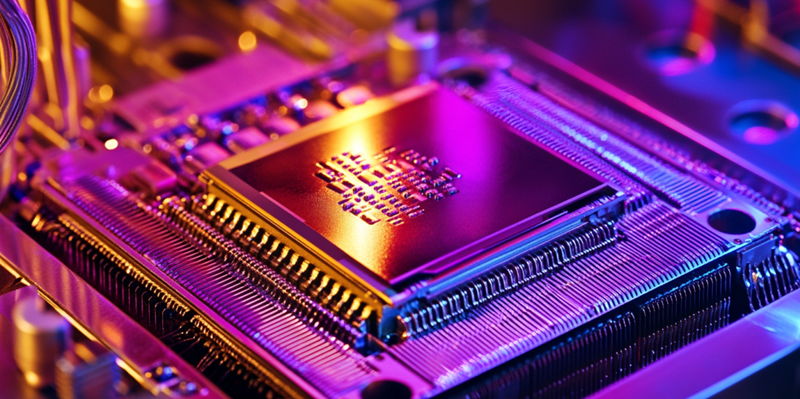Google has recently unveiled its latest quantum processor, named Willow, in what marks a significant milestone in the rapidly evolving domain of quantum computing. The cutting-edge processor seems to push the boundaries of what current-day technological marvels can achieve, portraying a future filled with unprecedented processing capabilities. Willow can reportedly solve complex problems in mere minutes, a task that would take classical supercomputers an incomprehensible length of time—10 septillion years, to be precise. This improvement underscores the staggering potential of quantum computing in solving intricate problems that are otherwise out of reach for conventional systems.
Quantum vs Classical Computing
Quantum Superiority in Speed and Efficiency
A central theme that emerges when comparing quantum and classical computing is the immeasurable speed and efficiency that quantum mechanics introduces to computation. Quantum computers like Willow leverage the unique properties of qubits, such as superposition and entanglement, to perform calculations that classical computers could never achieve in a practical timeframe. Superposition allows qubits to exist in multiple states simultaneously, whereas entanglement links qubits such that the state of one directly influences the state of another, even when separated by vast distances.
However, the revolutionary nature of these qubits also introduces operational challenges. Specifically, qubits are highly sensitive and require extreme and isolated conditions, often at ultra-cold temperatures nearing absolute zero, to avoid decoherence, a phenomenon that causes computational errors. Decoherence occurs when qubits interact with their environment in undesirable ways, leading to the loss of their quantum state. This necessity for isolation and temperature control is a significant hurdle that quantum engineers must overcome to harness the true potential of quantum processors like Willow. Despite these challenges, Google’s Willow processor has pioneered advancements that markedly reduce error rates and improve computational precision.
Enhanced Accuracy with Growing Qubit Arrays
Another profound trend highlighted by Willow is its improved accuracy over preceding quantum processors. Traditionally, as the number of qubits in an array increased, so did the error rates, making computations less reliable. Interestingly, Willow has demonstrated the opposite effect—getting more accurate as the qubit count increases. Google’s rigorous tests using different qubit arrays, specifically 3×3, 5×5, and 7×7 configurations, revealed that error rates actually decreased in larger arrays. This improvement stems from advancements in quantum coherence time, which extends the duration qubits remain in a coherent state, thus enabling rapid and effective error correction mechanisms.
Google’s head of quantum computing, Hartmut Neven, introduced an intriguing term to describe Willow’s enhanced accuracy—"below threshold." He proudly characterized the system as "beyond breakeven," capable of achieving real-time error correction. The importance of this ability cannot be overstated as it vastly improves Willow’s reliability and operational efficiency, elevating its status above even the fastest classical supercomputers like Frontier. By addressing one of the core issues in quantum computing—accuracy—Willow positions itself as a formidable tool for solving complex tasks that have long eluded even the most advanced traditional systems.
Specific Achievements and Challenges
Random Circuit Sampling and Practical Limitations
Google’s advancements through Willow are underscored by their application of the Random Circuit Sampling (RCS) benchmark, a test specifically designed for quantum computing parameters. This benchmark allows researchers to validate quantum performance by sampling outputs from random quantum circuits. Willow’s exceptional performance on the RCS test not only highlights its robust capabilities but also emphasizes the practical constraints and niche nature of such benchmarks. While RCS may not have direct real-world applications, it serves as an effective metric for comparing quantum processors and demonstrates their potential capabilities.
Moreover, the specificity of the RCS benchmark reveals the limitations inherent in current quantum computing. While Willow’s prowess is impressive, practical applications of quantum computing are still developing. Published results in high-profile journals like Nature and the open sharing of quantum software by Google invite external verification and collaboration from the broader scientific community. Through this collaborative approach, Google aims to refine quantum computing techniques, making them more reliable and applicable for a broader range of problems beyond controlled test environments.
Potential Applications and Future Goals
Quantum processors like Willow could revolutionize various sectors by providing solutions to problems that were previously deemed unsolvable. The progress ushered in by Willow showcases how far quantum computing has come and offers a promising glimpse into future technological innovations that could redefine our world.

